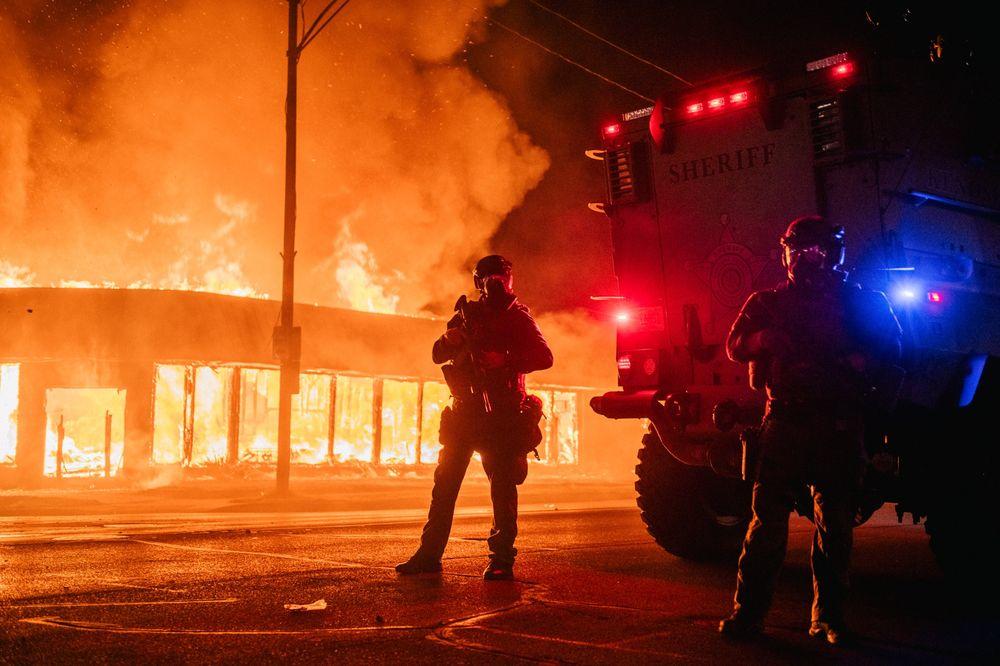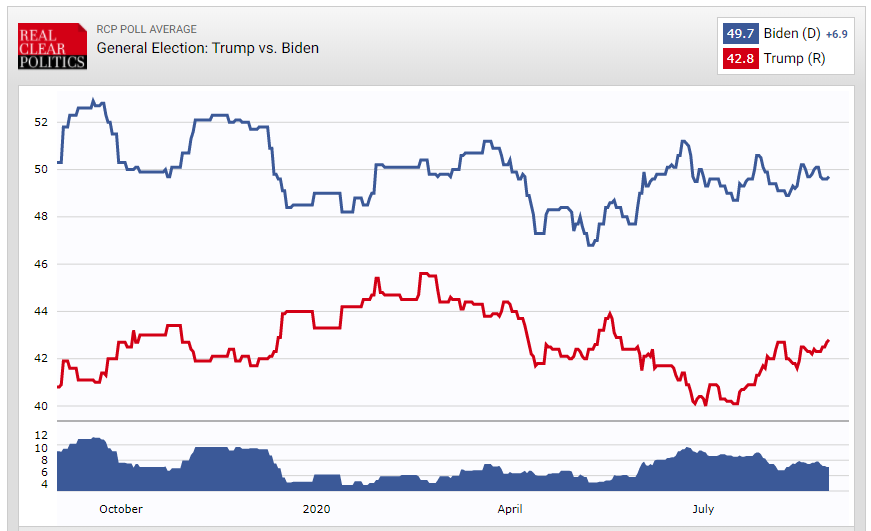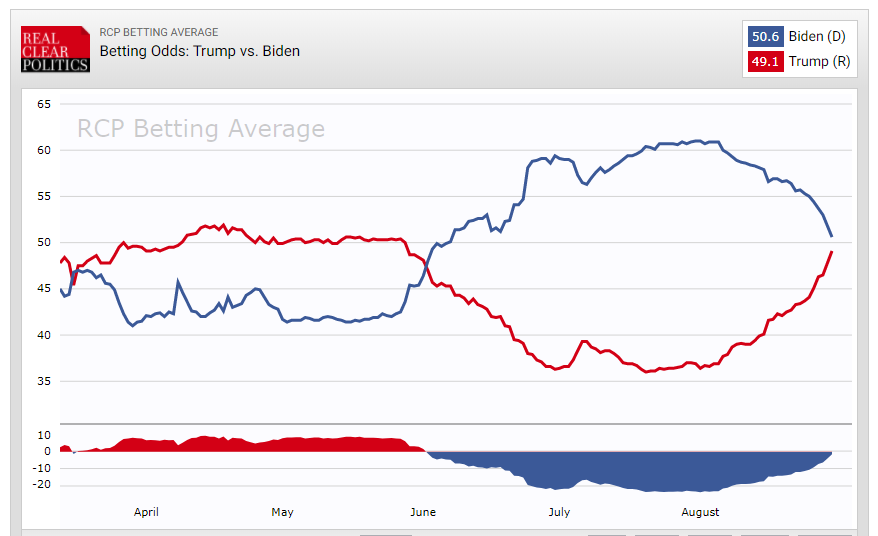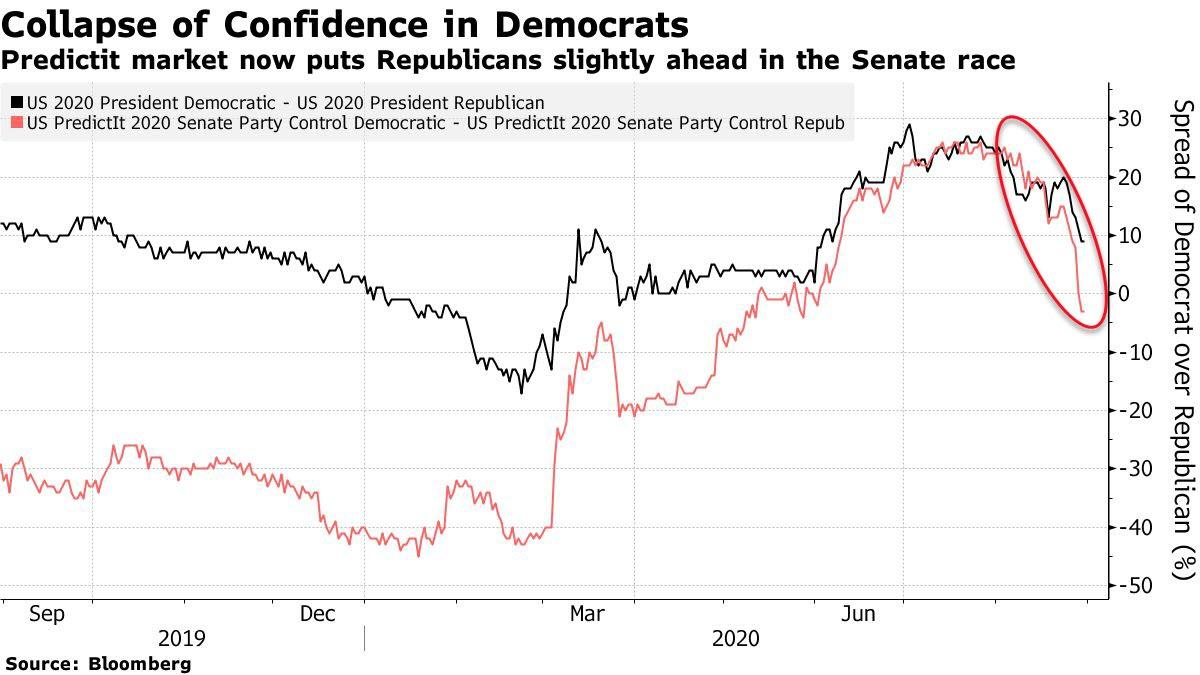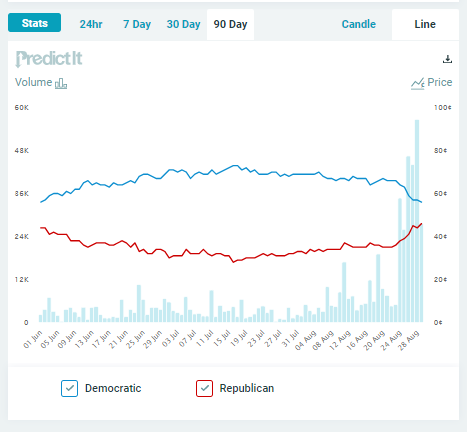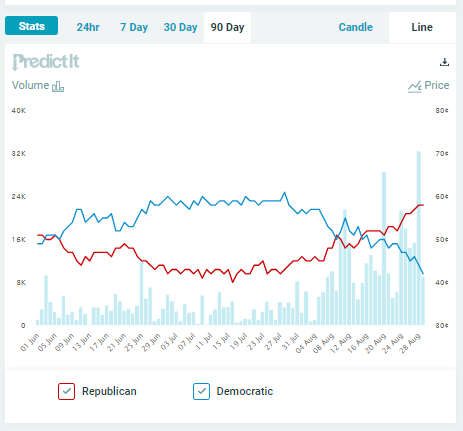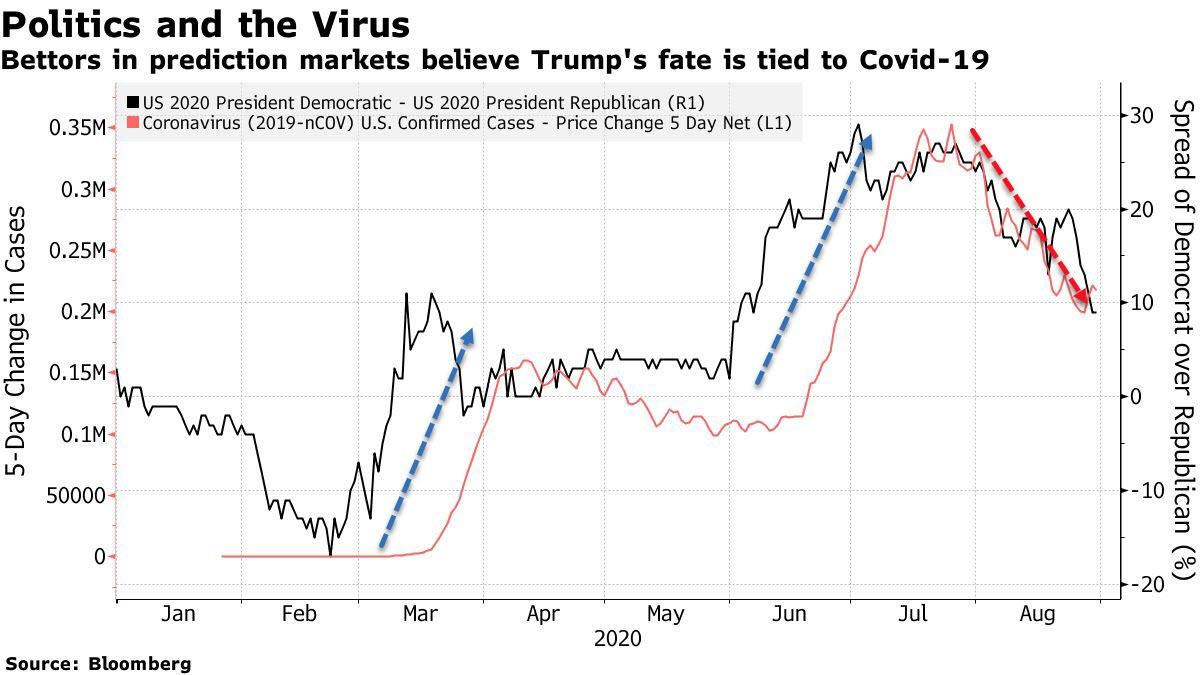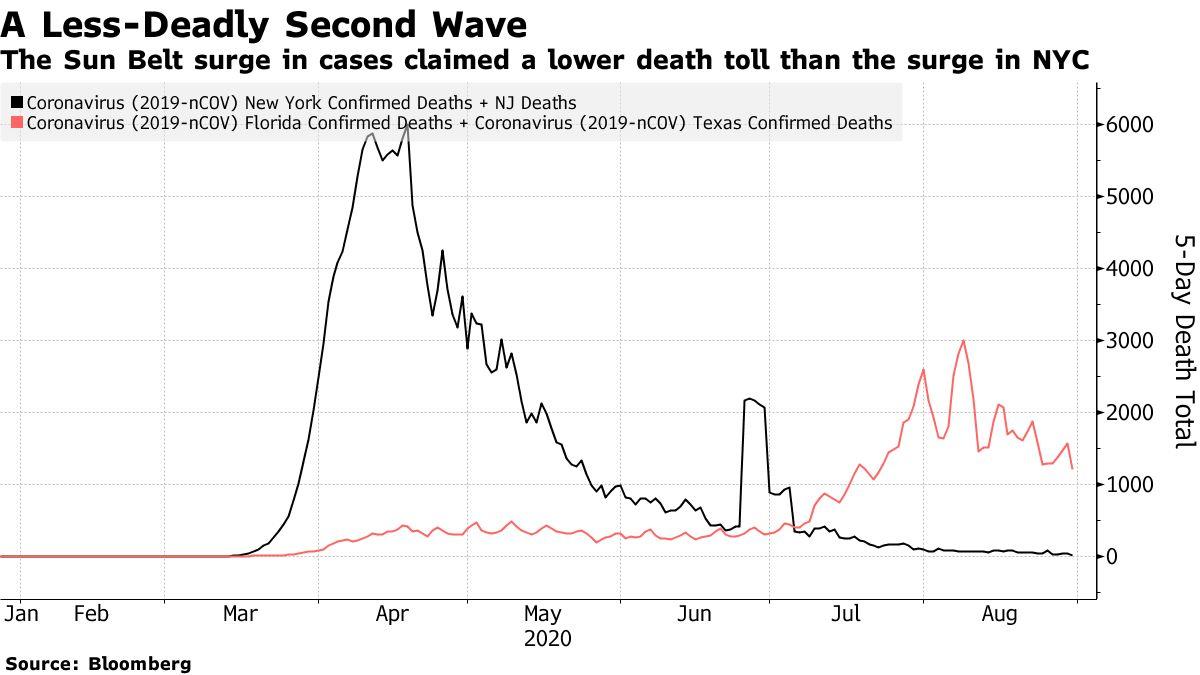Here’s Why The Dems Are Panicking In Six Charts – Kenosha Chaos & Pandemic Progress
Tyler Durden
Mon, 08/31/2020 – 10:25
Authored by John Authers, op-ed via Bloomberg,
The Money Says Kenosha Is Helping Trump
Prediction markets show people are betting the disorder will help the president, even though he is the incumbent.
Labor Day will be late this year, on Sept. 7, and it barely seems to function as the start of the presidential campaign any more. With both parties’ conventions complete, the last leg of the U.S. presidential campaign starts now.
It does so with prediction markets, in which investors trade futures tied to the result, suddenly sharply out of line with the closest political equivalent of “fundamentals” — rolling poll of polls averages. The following chart of the polling average from RealClearPolitics shows the Democrats’ Joe Biden in a clear and stable lead of almost 7 percentage points:
[ZH: Although, in battleground states, Trump is ahead of where he was in 2016…]
Now look at the “betting average” compiled by the same organization. This aggregates a number of spread-betting sites to produce an average probability of each candidate winning. On this reckoning, Biden’s lead has collapsed in the last month:
In the Predictit market, where investors trade futures tied to political outcomes, the spread on Biden beating Trump has declined sharply, but is still at 10% (55% plays 45%). What will be horrifying to Democrats is that their chance of taking control of the Senate is deemed to have imploded:
Neither prediction markets nor polls are perfect. They were both wrong four years ago. But it’s hard to get a better grasp on perceived probabilities than from a prediction market, where people are betting actual money. Over history their results have tended to be uncannily accurate. And polls tend at least to be directionally right.
There are, I suspect, three factors at work here.
The first is simply a lag.
Gamblers have the chance to place bets before the polls come out, and a lot of people are convinced that the odds have shifted in the Republicans’ favor. This will be partly due to the Republicans’ convention, which would normally give some polling “bounce,” but is more thanks to a second critical factor, which is the disorder in Kenosha, Wisconsin.
Since the shooting of Jacob Blake went viral a week ago, trading volume in Predictit’s contract on the presidential outcome in Wisconsin has surged, as has the probability of a Trump victory. Biden is still shown with a slight lead, but it has reduced sharply — and Wisconsin may well be the “tipping point” state that decides the election.
Source: PredictIt
The Kenosha effect isn’t specific to Wisconsin. Bettors appear to believe that the disorder will help Trump throughout the country. Here is a similar chart for North Carolina, a state that fell to Barack Obama and which bettors considered a likely Biden victory. There has been a dramatic change, which started before Kenosha and has since accelerated:
Source: PredictIt
Are prediction markets right? In 1968, perceptions of increasing lawlessness helped Richard Nixon to victory — but he was running against a sitting vice-president, while the current Republican candidates are incumbents. There is also a strange disconnect in the betting markets, which is that the violence following the killing of George Floyd in late May, and the growth in support for Black Lives Matter, was seen as almost wholly positive for Biden, while the latest protests are seen as helping Trump.
There should be more evidence on the Kenosha impact in coming days. For now, the caution of fivethirtyeight.com makes sense:
“There’s just not a lot of data that can help us understand how Americans are responding to what’s happening in Kenosha, Wisconsin, but… one thing we do know is that declining support for the Black Lives Matter movement hasn’t translated to a decline in support for Biden just yet.”
The final factor is the coronavirus. So far this year, Biden’s chances have improved when cases are increasing, and declined when they are falling. The relationship is startlingly close:
If cases continue to decline, Trump’s chances will be deemed to improve further. Moreover, there is evidence that the virus is less deadly as time goes by. The fact that the (mostly Republican) Sun Belt states suffered far fewer deaths than the (mostly Democratic) northeast did earlier this year is seen as removing a key risk for Trump. The following chart compares the five-day change in deaths for New York and New Jersey, against Florida and Texas. It shows that the second “wave” in the sun belt was far less severe — and would seem even smaller if the numbers were adjusted to take account of the southern states’ larger populations:
Republicans tended to refer to the pandemic in the past tense at their convention last week, which was highly questionable given the continuing numbers of fatalities. But if current trends in infections and deaths continue, it may begin to look justifiable by election day.
Will it happen? Two months ago, I offered this framework for asking why infection rates (often referred to as “R”) were falling. It was produced by Andrew Brigden, chief economist of Fathom Financial Consulting in London, and it remains as relevant today. He offered five roughly equally plausible explanations:
-
Heterogeneity across the population means that we all have a different R number, with some people, including those with a large network of contacts, more likely both to acquire the disease and to pass it on. Once those people have been exposed, and are no longer susceptible, the average R will fall;
-
The virus has spread far more rapidly than antibody testing suggests, which means the virus is running out of people to infect;
-
Fear of dying from the disease provokes other changes in behavior, such as more frequent hand-washing and wearing face masks;
-
Potential “super spreader” events — such as nightclubs and concerts that bring many people together indoors — are no longer happening;
-
It is a seasonal phenomenon in the northern hemisphere, and will return later this year.
The first two are broadly cases for “herd immunity” having arrived earlier than many had expected. If true, these would be great for Trump. The third and fourth suggest there could be perils from complacency, particularly as schools attempt to reopen. The fifth would be a disaster, but there is no particular evidence yet that it is going to happen.
If, looking through these options, bettors think the pandemic may appear to be over by November, then that would go a long way to explaining the way they see the race narrowing.
Whatever the truth of the coronavirus, it would be wise to brace for a lot of politically induced volatility between now and the end of the year.
via ZeroHedge News https://ift.tt/2ERfd4q Tyler Durden
